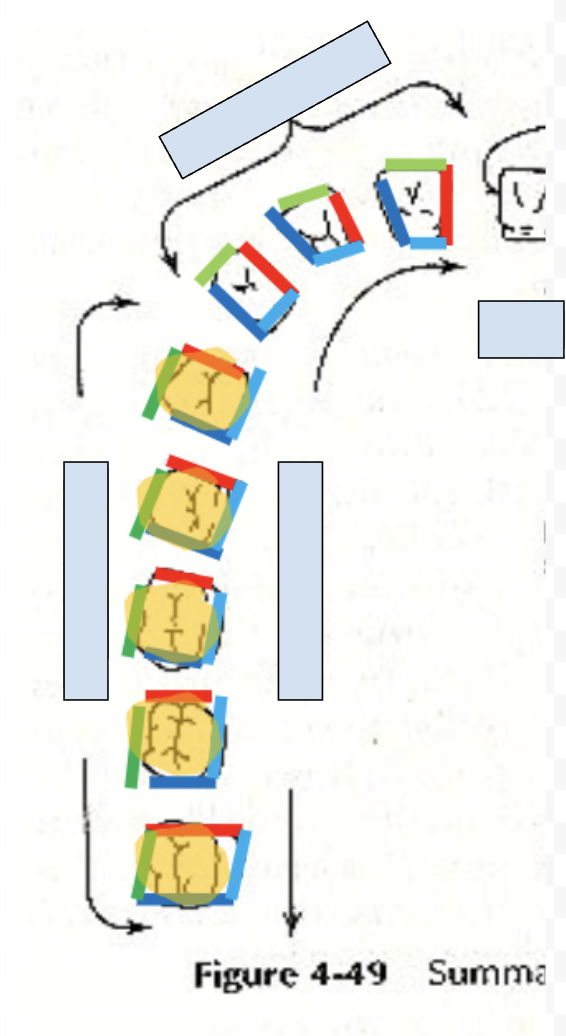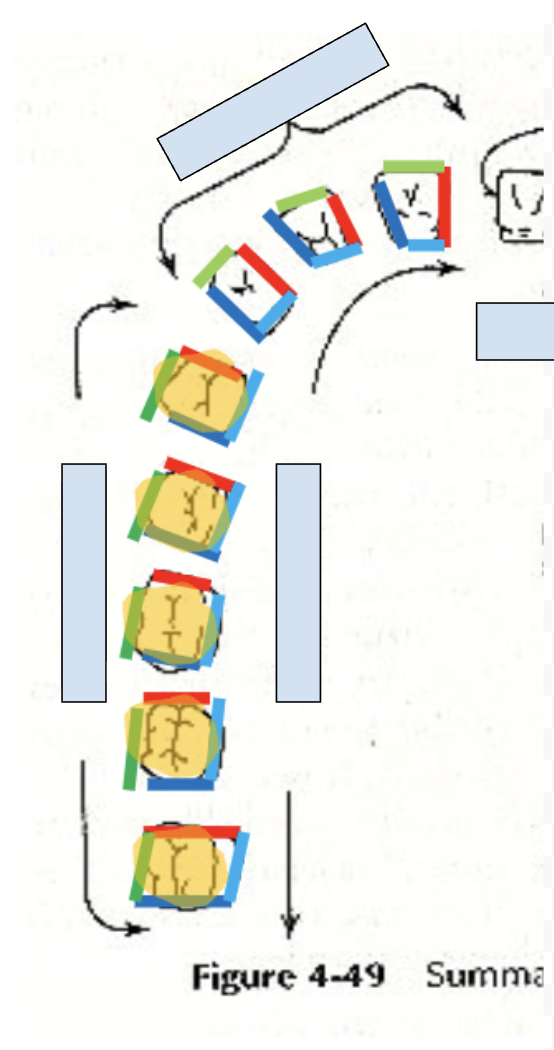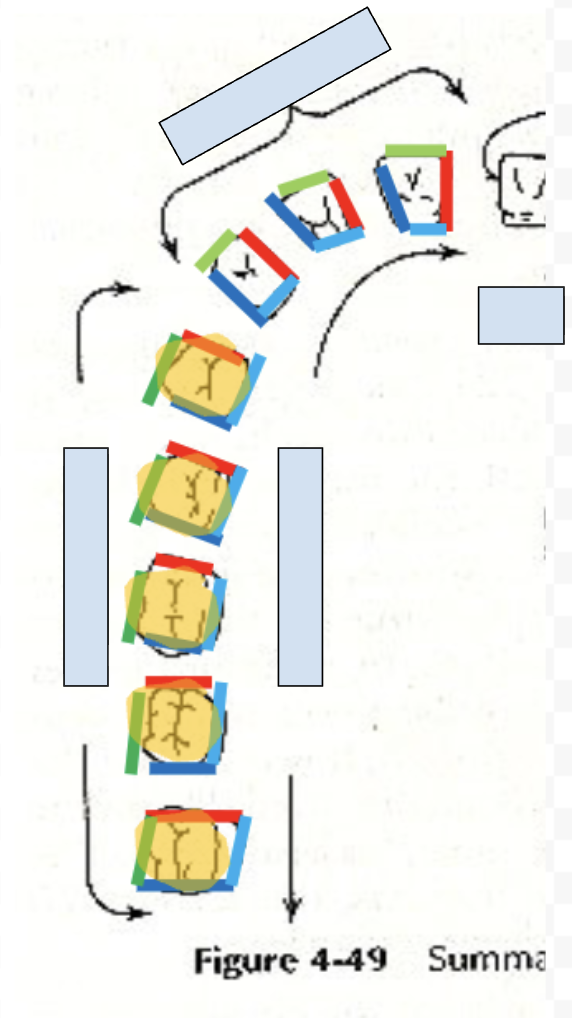Anatomy Unit 5 - Articulation II Oral and facial landscapes
1/41
There's no tags or description
Looks like no tags are added yet.
Name | Mastery | Learn | Test | Matching | Spaced |
|---|
No study sessions yet.
42 Terms
Faucial pillars (arches)
Bands of tissue on each side of the soft palate, ends the oral open area
Oralpharyngeal isthmus
Narrowing in vocal tract between faucial pillars
Boundaries of oral cavity and pharynx junction
Soft palate above, dorsum of the tongue below
Buccal cavity
Lateral to oral cavity - space between teeth and cheeks
Philtrum
groove between base of nose and upper lip
Vermilion border
transition between skin of face and lips
Teeth (functions)
speech
Two sets of teeth
deciduous (20)
permanent (32)
Parts of tooth
crown, neck root
Tooth crown
covered by enamel - hardest structure in the human body - resists attrition and abrasion
Tooth root
embeded in the jaw, covered by a bone0like substance called cementum
Dentin
Makes the solid portion of a tooth
Dental morphology - four types
Incisors (8)
Canines (4)
Premolars (4)
Molars (4-6)
Dental surfaces
Medial, Distal, Lingual, Buccal/Labial, Occlusal
Medial surface
side of tooth toward middle teeth (red)

Distal surface
side of tooth away from middle teeth (dark blue)

Lingual surface
side of tooth toward tongue (light blue)

Buccal/labial surface
front of teeth toward lips (buccal wall) (green)

Occlusal surface
surface between upper and lower teeth (yellow)

Incisors
biting off food, large crowns, single roots
Canines/cuspids
piercing and cutting food, single roots, largest roots give rise to canine eminence
Premolars/bicuspids
cutting and shearing food, two cusps on occlusal surface, not present in deciduous teeth, 1 or 2 roots
Molars
large teeth with large occlusal surfaces, crushing and pulping food - mixing with salivary enzymes, variable number of cusps and roots
Tooth eruption pattern
deciduous teeth stay for 4-10 years, mixed dentition stage, permanent set contains successional and superadded teeth
age 1: mandibular central incisor, maxillary central incisor, maxillary lateral incisor
age 1.5: mandibular lateral incisor, 1st molars, canines
age 2: 2nd molars
age 6: permanent teeth start: upper/lower center incisors, upper/lower 1st molars, lower lateral incisors
age 8-9: upper lateral incisors
age 10-13: canines, upper/lower 1st and 2nd premolars, 2nd molars
post puberty: 3rd molars
Dental occlusion
contact pattern between teeth when jaws closed
normal occlusion: maxillary incisors labially overlap the mandibular incisors with slight overlap of remaining maxillary dentition
Malocclusion
misalignment of dental structures
class I: arches are properly aligned but individual teeth are misaligned
class II: maxilla is protruded and mandible is receded (overbite)
class III: maxilla is receded and mandible is protruded (underbite)
tongue anatomy - made of what?
mucous membrane
fibrous submucosal layer
muscle tissue
nerve fibers
blood vessels
fibrous midline septum
separates two halves
median or medial sulcus = depression on tongue surface
covered in papillae that hold taste buds
midline septum
vertical layer of fibrous tissue in the tongue midline
Lingual frenulum and ankyloglossia
band of tissue running from inner mandible mucosa to underside of the tongue
tongue tie - short and thick lingual frenulum, limited mobility, minor speech and feeding problems
Place of articulation names
active and passive articulator
Coronal sounds
dental, alveolar, palato-alveolar, retroflex - tongue tip
Dental sounds
tongue tip and upper front teeth - tip pointed up (the, thin)
alveolar sounds
tongue tip and alveolar ridge (tap, sin, night) - tip is up
palato-alveolar/post-alveolar sounds
tongue blade and hard palate (shin, yet) - tip pointed down
retroflex sounds
tongue tip and hard palate - tip pointed up
Dorsal sounds
palatal, velar, uvular - often vowels - raise the jaw, raise body of tongue
palatal sounds
front of tongue and hard/soft palate (key, geese)
velar sounds
back of tongue and velum (gone)
uvular sounds
back of tongue and uvula
glottal sounds
vocal folds - adduct and tense the vocal folds (and sometimes ventricular folds) (hot, uh-oh)
coarticulation
movements for different sounds overlap with each other
synergy
articulators that work together to form a constriction